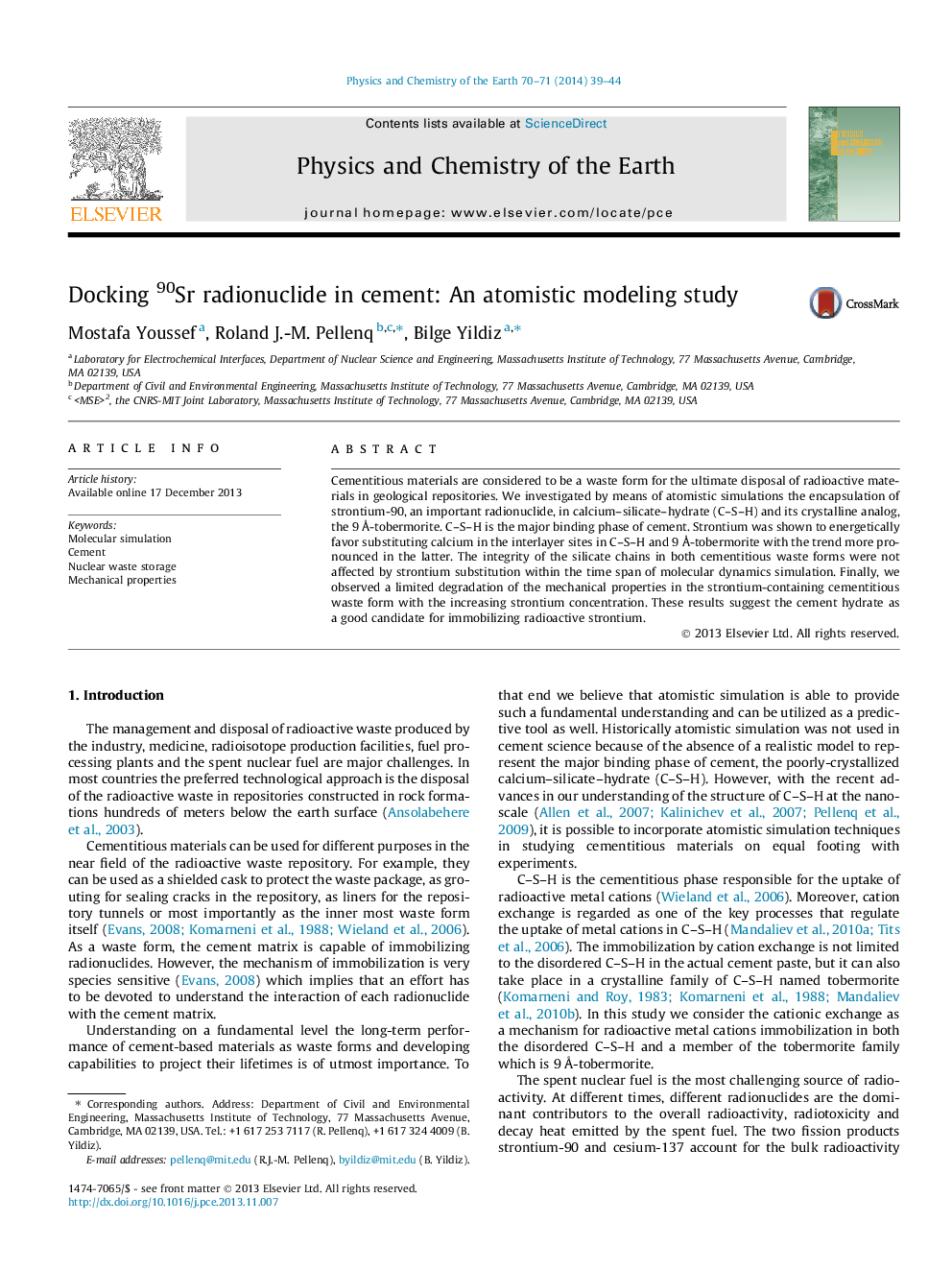| Article ID | Journal | Published Year | Pages | File Type |
|---|---|---|---|---|
| 4720980 | Physics and Chemistry of the Earth, Parts A/B/C | 2014 | 6 Pages |
•We investigated the encapsulation of Sr-90 in CSH and in 9 Å-tobermorite.•Strontium can be substituted for calcium in C–S–H and 9 Å-tobermorite.•The integrity of the silicate chains in both phases is maintained upon Sr-90 substitution.•Limited degradation of the mechanical properties is observed.•These results suggest that CSH is a good candidate for immobilizing Sr-90.
Cementitious materials are considered to be a waste form for the ultimate disposal of radioactive materials in geological repositories. We investigated by means of atomistic simulations the encapsulation of strontium-90, an important radionuclide, in calcium–silicate–hydrate (C–S–H) and its crystalline analog, the 9 Å-tobermorite. C–S–H is the major binding phase of cement. Strontium was shown to energetically favor substituting calcium in the interlayer sites in C–S–H and 9 Å-tobermorite with the trend more pronounced in the latter. The integrity of the silicate chains in both cementitious waste forms were not affected by strontium substitution within the time span of molecular dynamics simulation. Finally, we observed a limited degradation of the mechanical properties in the strontium-containing cementitious waste form with the increasing strontium concentration. These results suggest the cement hydrate as a good candidate for immobilizing radioactive strontium.
Graphical abstractFigure optionsDownload full-size imageDownload as PowerPoint slide
